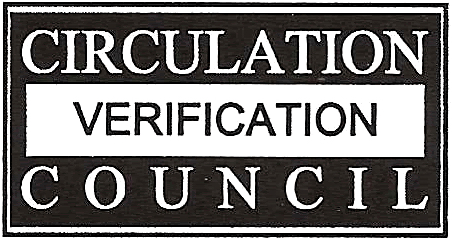While Donald Trump’s popularity in the Republican primaries may be diminishing as registered voters are gaining more insights into the right wing party’s candidates, how he achieved such popularity in the first place still seems relevant in today’s American world. What is known, is that the GOP seems to want to step away from the politicians already in place. This should be fairly obvious, as, despite a field with former and current Governors and Senators, the Conservative Party favors candidates without political experience like Fiorina, Carson, and Trump.[1]
 We could also follow along with the likes of Dr. Drew who, after hosting a show related to Donald Trump with an audience filled with his supporters, realized that each of the supporters had at some point become jaded towards the standard politicians and found their disdain reflected in the words and messages conveyed by the blonde-haired mogul[2] – words and messages that lacked media traction until he had made comments about Mexican immigrants who were, paraphrased, bringing drugs, crime, and rapists across their border to the North.[3]
We could also follow along with the likes of Dr. Drew who, after hosting a show related to Donald Trump with an audience filled with his supporters, realized that each of the supporters had at some point become jaded towards the standard politicians and found their disdain reflected in the words and messages conveyed by the blonde-haired mogul[2] – words and messages that lacked media traction until he had made comments about Mexican immigrants who were, paraphrased, bringing drugs, crime, and rapists across their border to the North.[3]
This being said, is it possible that what Trump said could be right? Is it possible that the current immigrants to the country were just as bad as the picture he painted about them?
Immigration to the States Picked Up in the Nineties
Depending on which theory you believe, and there’s three that tend to hold greater weight, Mexican immigrants started moving North either based on a supply and demand chain, US Governmental Policies, or economic trends in the South.
1. The first theory being based on Card and Lewis’s study highlights that population growth, decreased wages, and continued weak economic conditions in Mexico led to the migration of Hispanics with the likely choice of the United States being the result of the immigrants following prior immigrants who had also migrated to the USA as well as increased employment opportunities and wages.[4]
2. In a different study, however, the immigration was more directly related to the ratification of NAFTA (North American Free Trade Agreement), which severely decreased the Mexican farmer’s way of living as American corn was able to be sold at half their prices as the United States was able to produce twice as much corn from 75,000 corn farmers in Iowa on subsidized prices versus 3,000,000 corn farmers across the entire country of Mexico. With the immediate economic depravity, the farmers were not able to keep up their lands and abandoned their farms with most coming across the border illegally.[4]
This agreement would also affect the farmers of other agreeing nations as Bill Clinton would famously note that after the Haitian earthquakes that ‘opening up the Haitian market to cheap U.S. rice ‘may have been good for some of my farmers in Arkansas, but it has not worked … I had to live everyday with the consequences of the loss of capacity to produce a rice crop in Haiti to feed those people because of what I did, nobody else.’”[5]
3. Lastly, a study by Richter, Taylor, and Yunez-Naude disputes the impact on NAFTA in immigration, but still holds to the weak economic conditions of Mexico driving immigrants to the United States based on overall macroeconomic trends in their native country while also citing the immigrant network that was already available to the migrators in the United States.[4]
So, while we have three different studies, with three slightly different outcomes, we can see some similarities in each for the main driver of immigrants in that the economic conditions were so poor in Mexico for many immigrants that traveling to the United States, whether documented or undocumented, often was the best solution to escape their poor situations and conditions.
Hispanic Immigration to the States Declines in 2010
 However, while the Hispanic population increased at a rate of 4.8% from 1995 to 2000, most recently this growth has started to decline since then to the point where growth of the US Hispanic population slowed to 2.2%. [6] In large part, this decline is due to a decrease in the amount of Hispanics who have immigrated to the US, with the Pew Research Center reporting at one point in 2012 that migration to America fell to zero, “meaning the number of Mexicans migrating north is equal or less than those going back to their country.” [7] When we consider that the singular similarity for the increased migration between the previous three studies relates to improved economic conditions, we can also hypothesize regarding the reasons for this decline being decreased financial opportunities, and looking further see the likelihood of this being the reason as in 2007 more than one in seven Latinos had careers in the construction industry. However, two years later, 24 percent of Hispanic construction jobs were lost. While the economy began rebounding and the jobs started coming back in 2013, that also only saw 100,000 new Hispanic construction positions open up while 700,000 had been lost by 2009 alone. Leaving at least 600,000 positions still not employed in the same industry. [8]
However, while the Hispanic population increased at a rate of 4.8% from 1995 to 2000, most recently this growth has started to decline since then to the point where growth of the US Hispanic population slowed to 2.2%. [6] In large part, this decline is due to a decrease in the amount of Hispanics who have immigrated to the US, with the Pew Research Center reporting at one point in 2012 that migration to America fell to zero, “meaning the number of Mexicans migrating north is equal or less than those going back to their country.” [7] When we consider that the singular similarity for the increased migration between the previous three studies relates to improved economic conditions, we can also hypothesize regarding the reasons for this decline being decreased financial opportunities, and looking further see the likelihood of this being the reason as in 2007 more than one in seven Latinos had careers in the construction industry. However, two years later, 24 percent of Hispanic construction jobs were lost. While the economy began rebounding and the jobs started coming back in 2013, that also only saw 100,000 new Hispanic construction positions open up while 700,000 had been lost by 2009 alone. Leaving at least 600,000 positions still not employed in the same industry. [8]
Seeing this loss of employment opportunities for Hispanics in the United States, it would also stand to reason then that this could have accounted not only for the decrease in Hispanic Immigration to the United States, but also caused more Latinos to migrate elsewhere where they could have found better opportunities to provide for their families as fewer Mexicans are now reporting having friends or relatives in the United States than they were in 2007.[7]
Expected Continued Hispanic Market Growth
 However, while migration continues to decrease, the Hispanic market continues to grow albeit through native-born Hispanics within the United States.[9] The shift first started beginning back in 2000 when between the years of 2000 and 2010, “there were 9.6 million Hispanic births in the U.S., while the number of newly arrived immigrants was 6.5 million.”[9] Given this time frame, as well as the decreasing total amount of Hispanics migrating north, it can be expected that not only will we continue to see the Hispanic population continue increasing in the future (although at a decreased rate of .5% as opposed to .8% through 2034 [8]), but also that the landscape of the Hispanic population will change linguistically and culturally as traditional American customs are mixed with the customs of their Heritage countries.
However, while migration continues to decrease, the Hispanic market continues to grow albeit through native-born Hispanics within the United States.[9] The shift first started beginning back in 2000 when between the years of 2000 and 2010, “there were 9.6 million Hispanic births in the U.S., while the number of newly arrived immigrants was 6.5 million.”[9] Given this time frame, as well as the decreasing total amount of Hispanics migrating north, it can be expected that not only will we continue to see the Hispanic population continue increasing in the future (although at a decreased rate of .5% as opposed to .8% through 2034 [8]), but also that the landscape of the Hispanic population will change linguistically and culturally as traditional American customs are mixed with the customs of their Heritage countries.
This is noticeable in the current marriage and living arrangements which show that the percentage of Hispanics 118 and older who have never been married had increased from 29% to 37% between 2000-2012 as well as there being an increase in two-person Hispanic households over the same period from 2000-2012, which is reflective of the general trend within native-born Americans. However, while this could also be in some ways related to the recessed economy, when looking further we can also see how young Latinos are adopting American culture linguistically as in general, only 26% of Hispanics age 5 and older speak English at home exclusively. Comparing this with immigrant children between the ages of 5 and 17 however, and 70% say they speak English-only or very well,[9] which is nearly the exact opposite percentage of the responses provided by their parents.
In essence, what we’re able to see is that while the Hispanic migration initially began as a result of poor economic conditions for our neighbors to the South; however, the recession then in turn caused poor economic conditions for the already migrated Latinos that was so great that many of them have returned home and the immigration to the United States has also decreased. Instead, what we are seeing is a new generation of Hispanics who are acclimating to the American culture and speaking the English language. This trend should continue to be considered ongoing barring any increases in the immigration rates again in the future, and will likely highlight a cultural group representative of both American culture and values mixed with the culture of their Heritage countries.
[1] https://www.nytimes.com/2015/10/08/opinion/nicholas-kristof-3-peerless-republicans-for-president-trump-carson-and-fiorina.html?_r=0[2]https://www.hlntv.com/video/2015/09/11/why-do-people-like-trump
[3]https://www.businessinsider.com/donald-trump-wild-week-2015-7
[4] https://digitalcommons.unl.edu/cgi/viewcontent.cgi?article=1044&context=econfacpub
[5] https://www.huffingtonpost.com/2014/04/18/immigration-latin-america_n_5168356.html
[6] https://www.pewresearch.org/fact-tank/2015/06/25/u-s-hispanic-population-growth-surge-cools/
[7] https://www.cnn.com/2014/08/27/world/americas/mexico-immigration-survey/
[8] https://www.multiculturalretail360.com/hispanic-population-growth-slows/
[9] https://www.pewhispanic.org/2014/04/29/hispanic-nativity-shift/
[10] https://abcnews.go.com/WNT/story?id=130884&page=1









